
Architractile is popular tensile fabric structure and canopy manufacturers in India. Architractile is best known tensile fabric architecture in India last few decades. Tensile fabric canopy is most demanding structure in Indian continent. Tensile fabric India is used in various application like as a roof, canopy, shading, building, texture, ceiling, covering, facade, shelters and textures. We are offering best tensile fabric roof cost in India. We have best structure designs of tensile fabric structures in architecture. We have best design and quality tensile fabric material used in manufacturing of tension fabric canopy in India.
Fabric structures are tensile structures that "stretch" a membrane to a three-dimensional surface that can be used to build a canopy, ceiling, covering, façade, shade, shelters, textures, roof, shading, or decorative portion. Many tensile fabric structures described as 'modern tabernacles' are of low material content relative to other construction types and are usually transparent. Still, they provide little thermal weight of isolation.
The membrane usually consists of a woven base clothing coated on either side and retains stress forces exerted by a structural structure or cable system. Contrary to traditional roofing schemes, structures of fabric may cover vast areas without columns. This makes them perfect for buildings like sports faculties, auditoriums, shopping malls, transport exchange, etc. They can be constructed relatively quickly and relocatable to temporary purposes, which means that buildings such as circus tents or military uses are connected historically. We are the Manufacturer, Designer, Contractor, Dealer, vendor, Architect, design, engineering, manufacturing, and installation Company of fabric structures and tensile fabric structures.
The origins of the material systems can be dated from the ice age and Siberian Steppe for more than 44,000 years, where traces of primitive shelters built from animals wrapped between sticks have been discovered. Tensile fabric structure manufacturing systems have been built and flourished mainly in areas with limited material or survival, all exacerbated by low rainfalls—the tent developed through the years into an emblem of frivolity from these strictly utilitarian beginnings. Tensile fabric roof Manufacturing systems were almost exclusively recreational and were implemented in ways that were contradictory to their practical context, rather than for military purposes.
This had to improve in the 19th and 20th centuries when architects were influenced by scientific breakthroughs of architectural philosophy and structural engineering on a modern functional aesthetic. It led to remarkable designs synonymous with modern industrial systems as the Hajj Terminal roof at Airport Jeddah, Millennium Cathedral, and Denver International Airport. The architect Frei Otto started an intensive analysis of the design values behind a new generational structural building.
Material
The earliest fabrics were composed of direct, animal, or vegetable membranes. Subsequently, these membranes were cut into strips and twisted into more comprehensive, more functional textiles and gradually twisted into circular parts, which allowed the development of versatile, continuous, high-strength fibers. The first fiber to be structurally durable was cotton, but new fabric structures appear to be manufactured in polyester or PTFE coated glass. Topcoats of PVC-coated polymer lacquers (PVDF) improve their 'cleanability' and offer additional protection. This material will last 15-20 years or around five years in places where sunlight is heavily exposed in average climates.
PTFE coated glass fabric is costly but stable and long-lasting and can last between 30 and 50 years. It also benefits from low maintenance and self-cleaning. In recent years, high-performance materials such as silicones, PTFE fiber, ETFE film, laminated open grids, separated and phase changes materials remain industry norms for PVC coated polyester PTFE coated glass. These tensile fabrics are available in various thicknesses, weights, Colors, and translucencies (sometimes known as structural membranes or architectural fabrics). See the development of structural membranes and architectural fabrics for more detail.
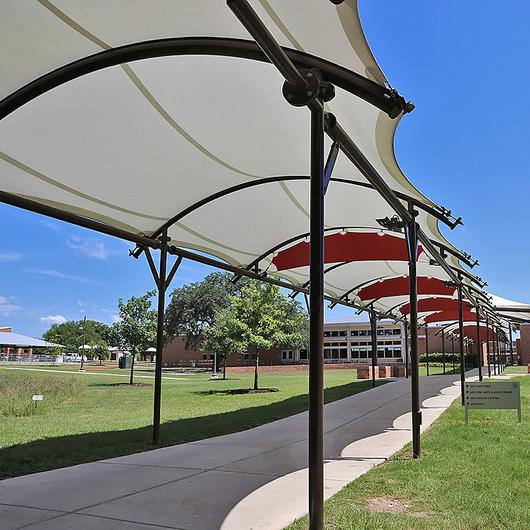 Walkway Structure
Walkway Structure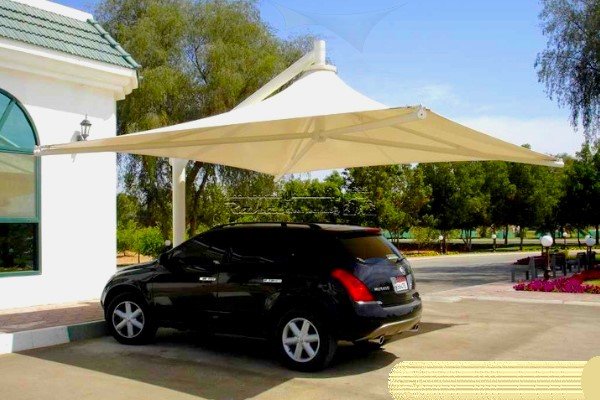 Tensile Umbrella
Tensile Umbrella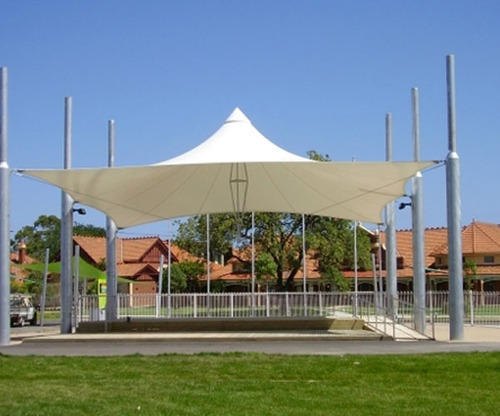 Tensile Gazebo
Tensile Gazebo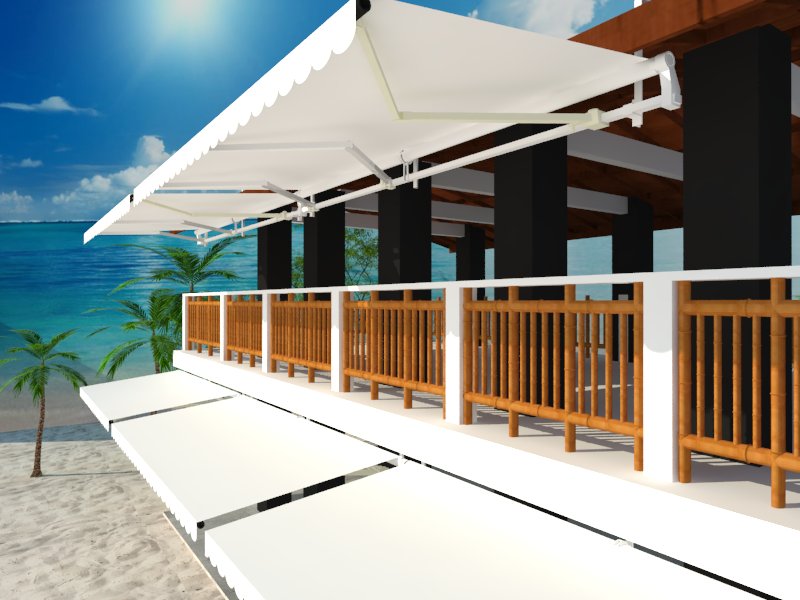 Awning Shade
Awning Shade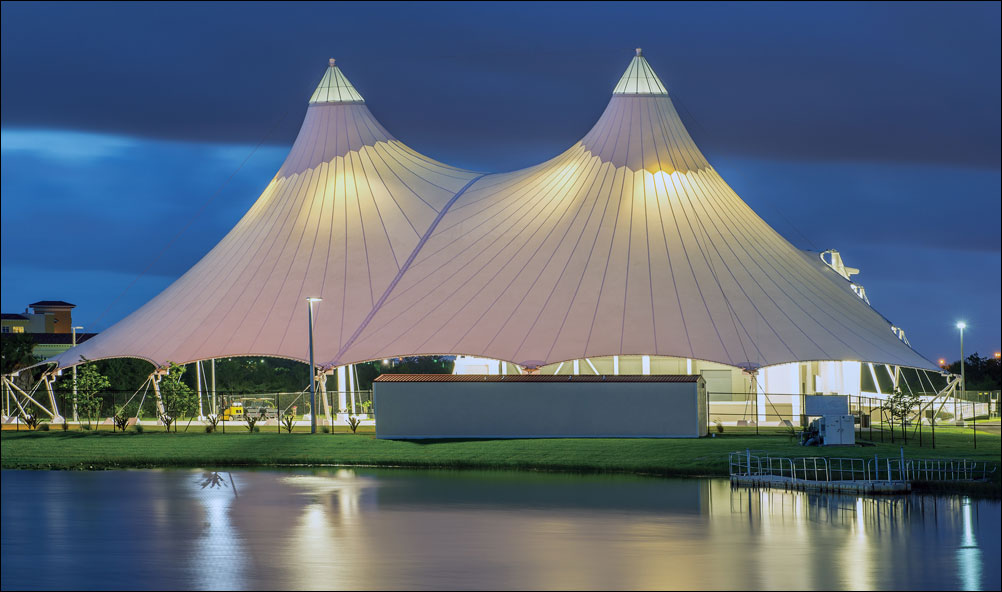 Tensile Structure
Tensile Structure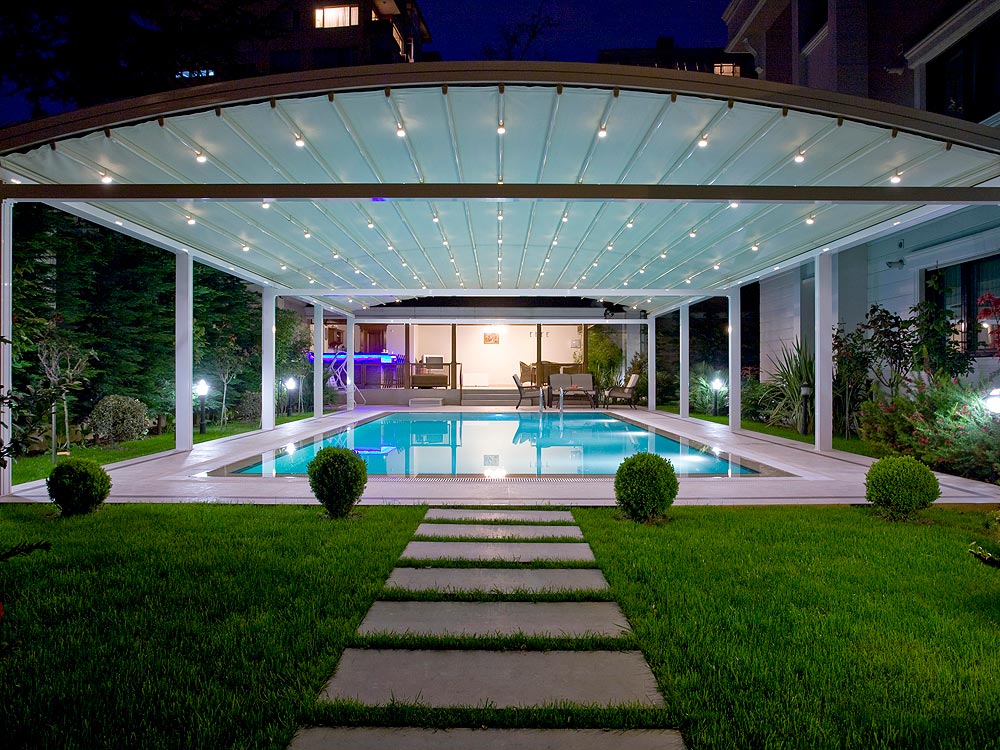 Swimming Pool Enclosures
Swimming Pool Enclosures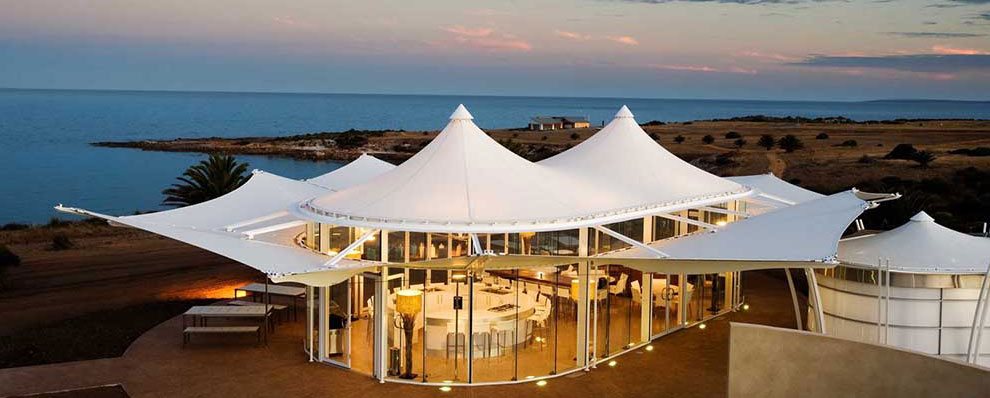 Tensile Roof Shade
Tensile Roof Shade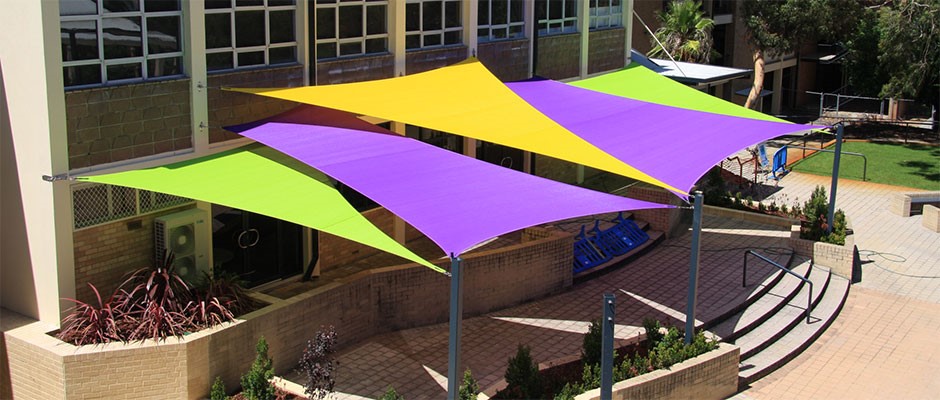 Shade Sail
Shade Sail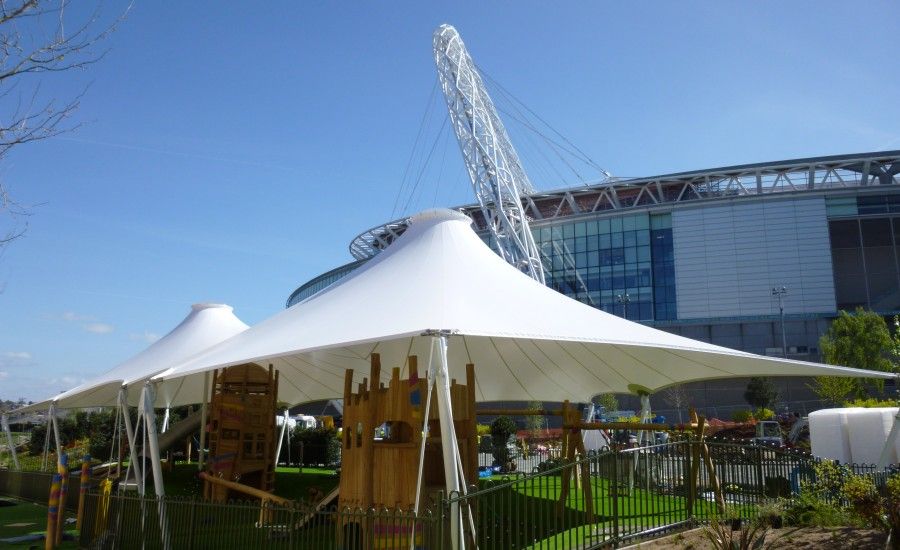 Architectural Umbrellas
Architectural Umbrellas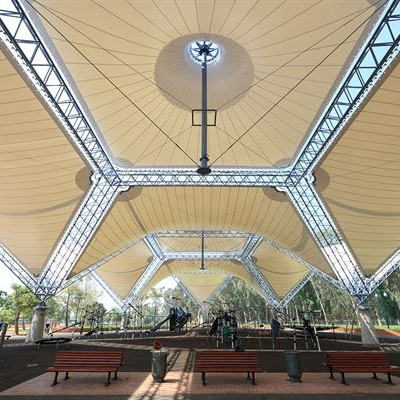 Auditorium Tensile Structure
Auditorium Tensile Structure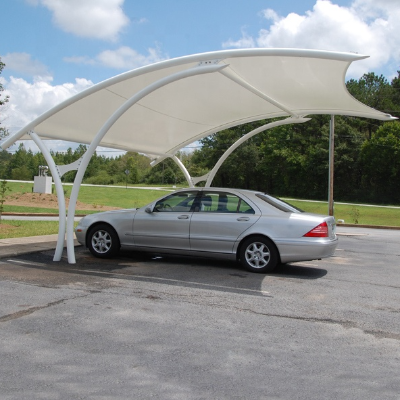 Tensile Car Parking
Tensile Car Parking Conical Tensile Structure
Conical Tensile Structure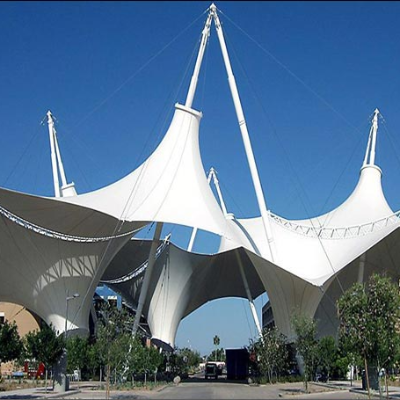 Modular Tensile Structure
Modular Tensile Structure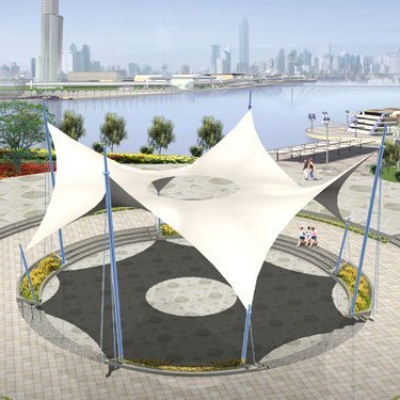 Outdoor Tensile Structures
Outdoor Tensile Structures Swimming Pool Tensile Structure
Swimming Pool Tensile Structure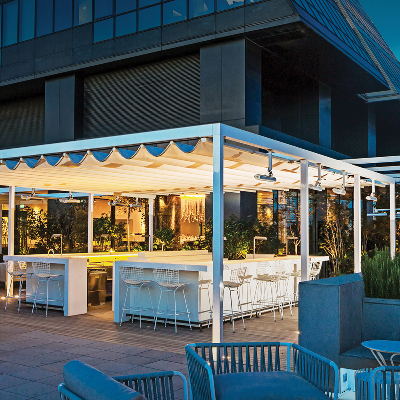 Retractable Roof
Retractable Roof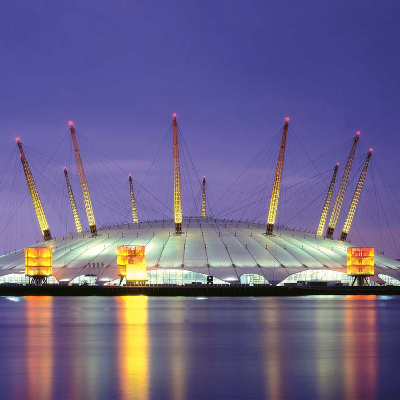 Tensile Architecture
Tensile Architecture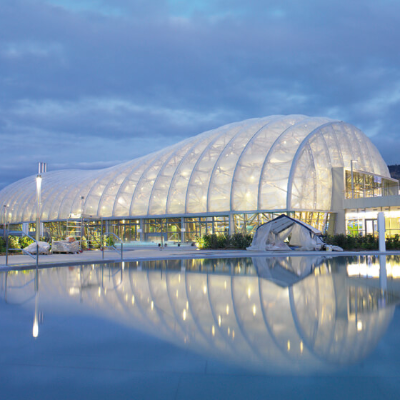 Tensile Membrane Structure
Tensile Membrane Structure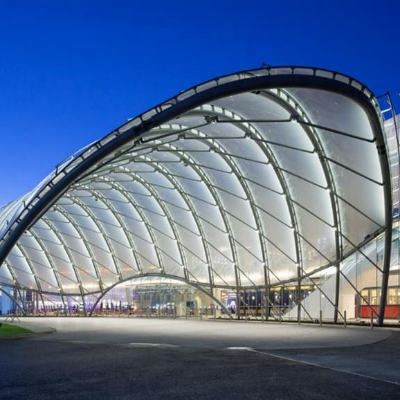 Tensile Roof
Tensile Roof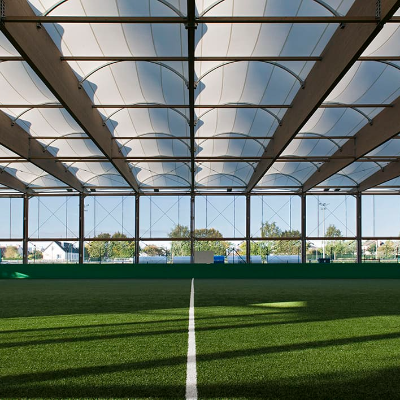 Fabric Roof
Fabric Roof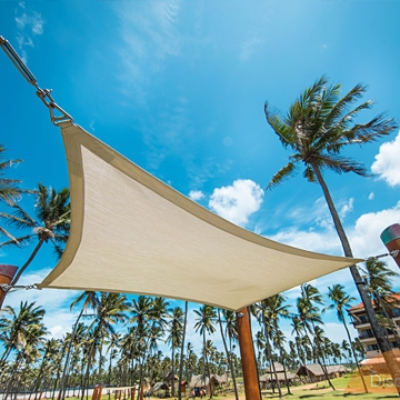 Hyper Tensile Structure
Hyper Tensile Structure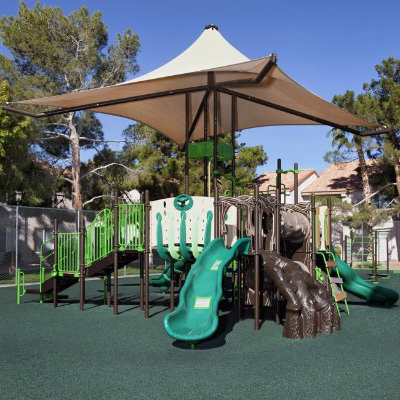 Playground Canopies
Playground Canopies Tensile Canopy
Tensile Canopy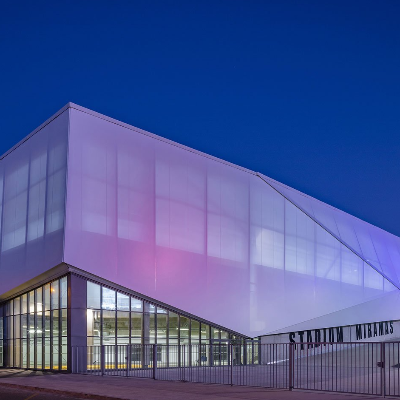 Tensile Facade
Tensile Facade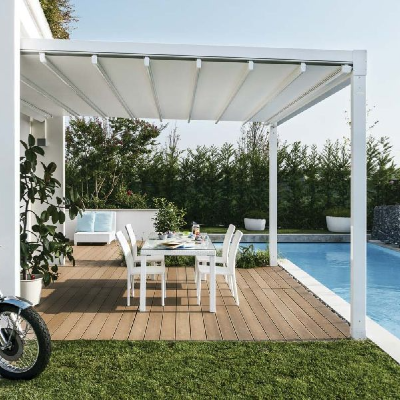 Tensile Pergola
Tensile Pergola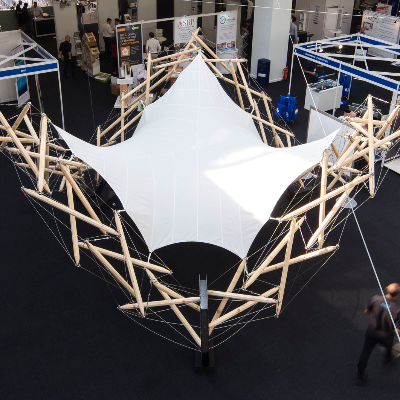 Tension Fabric Structure
Tension Fabric Structure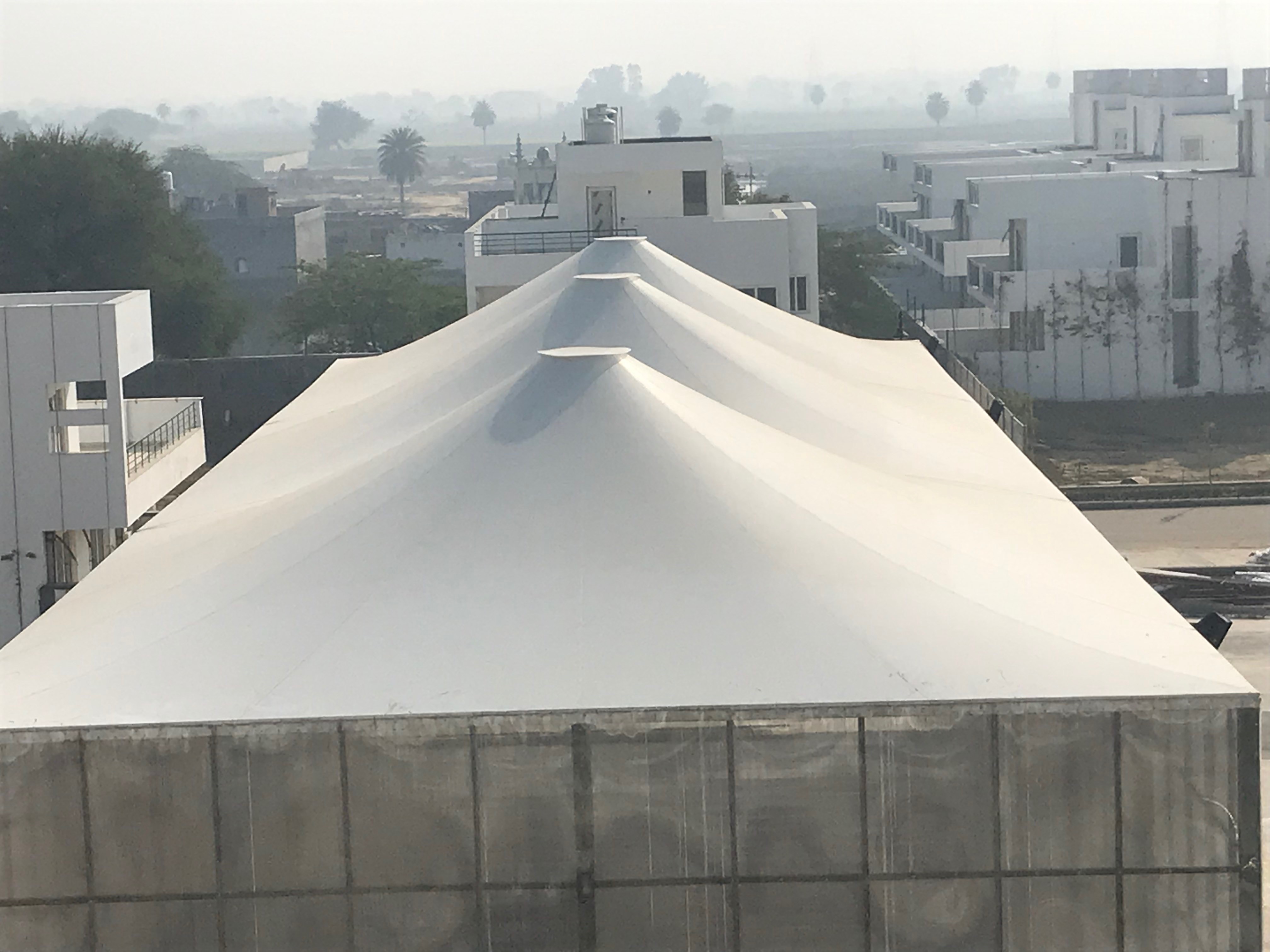 Badminton Court Tensile Structure
Badminton Court Tensile Structure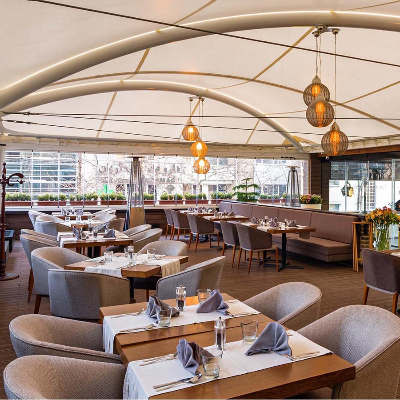 Restaurants Tensile Structure
Restaurants Tensile Structure Cantilever Tensile Structure
Cantilever Tensile Structure Inverted Umbrella Tensile Structure
Inverted Umbrella Tensile Structure Amphitheater Tensile Structure
Amphitheater Tensile Structure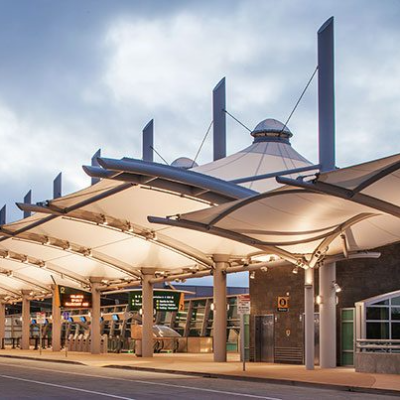 Airport Tensile Structure
Airport Tensile Structure Tensile Shelter
Tensile Shelter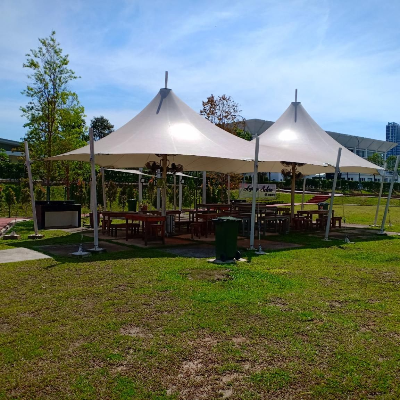 Lawn Tensile Structure
Lawn Tensile Structure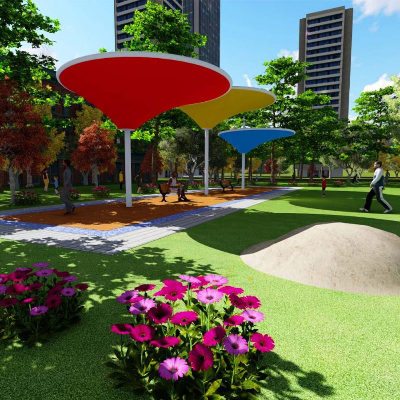 Garden Tensile Structure
Garden Tensile Structure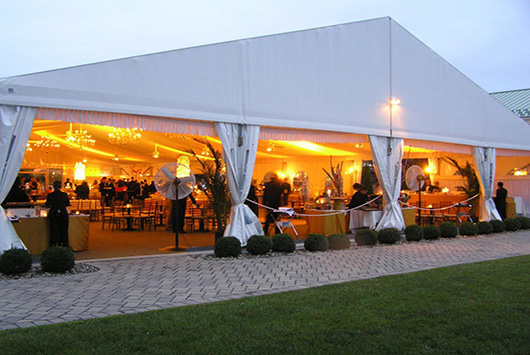 Marriage Hall Tensile Structure
Marriage Hall Tensile Structure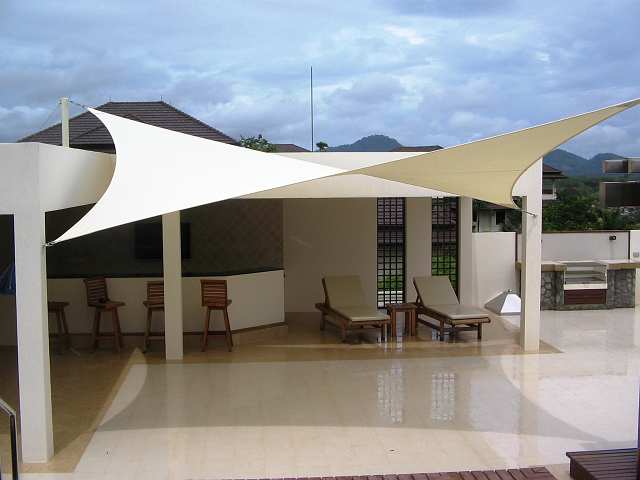 Terrace Tensile Structure
Terrace Tensile Structure House Tensile Structure
House Tensile Structure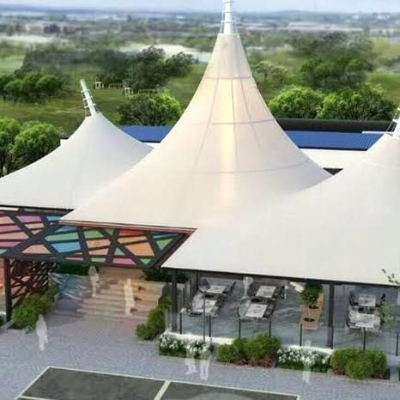 Roofing Tensile Structure
Roofing Tensile Structure Tensile Structure for Building
Tensile Structure for Building Tensile Structure for Parking
Tensile Structure for Parking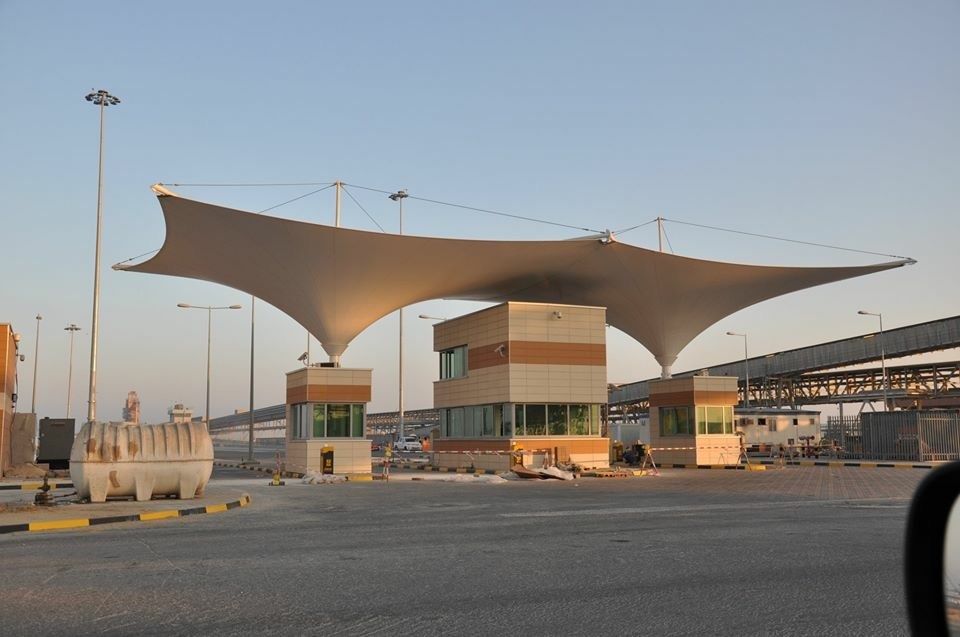 Tensile Structure for Entrance Canopy
Tensile Structure for Entrance Canopy Tensile Structure for Public Spaces
Tensile Structure for Public Spaces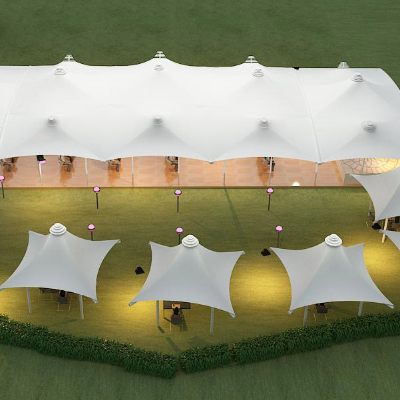 Tensile Structure for Banquet
Tensile Structure for Banquet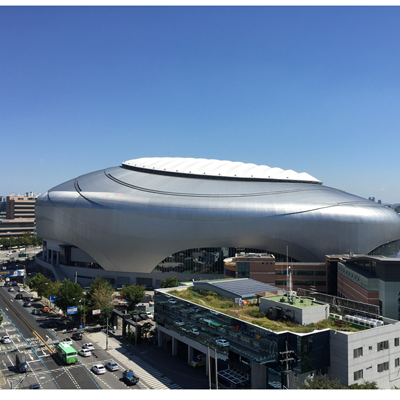 Anticlastic Structure
Anticlastic Structure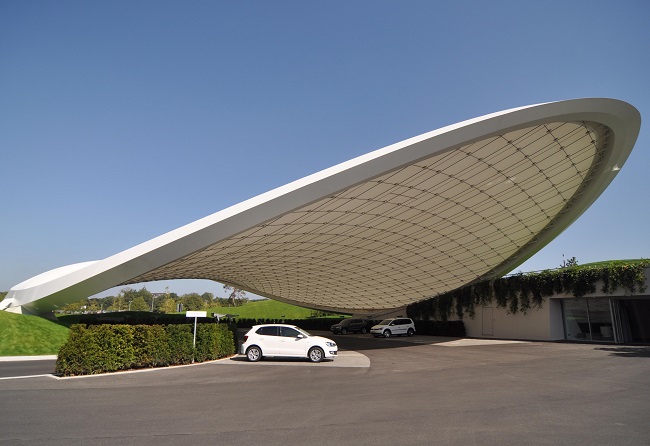 Synclastic Structure
Synclastic Structure Linear Tensile Structures
Linear Tensile Structures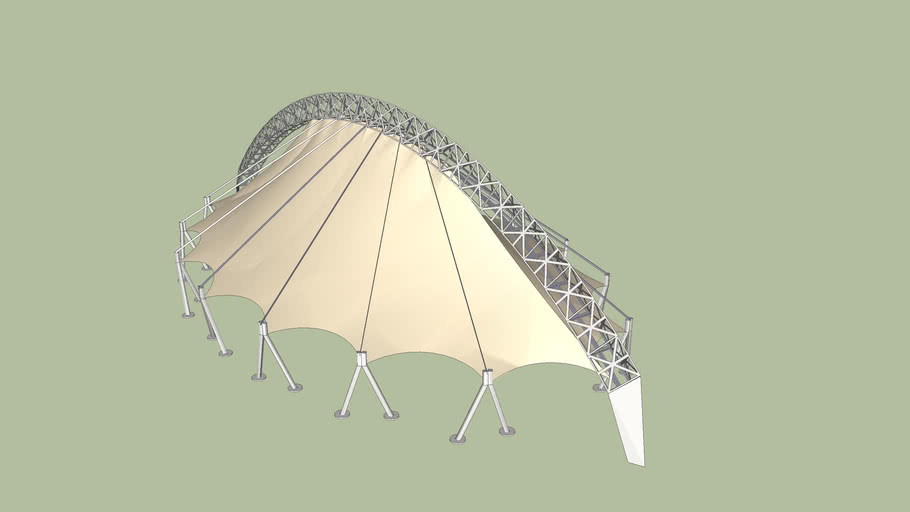 Three Dimensional Tensile Structures
Three Dimensional Tensile Structures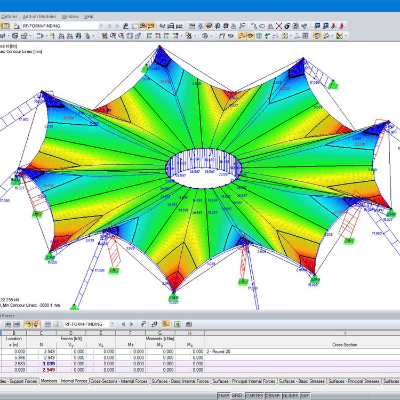 Surface Stressed Tensile Structures
Surface Stressed Tensile Structures Cable Net Membrane Structure
Cable Net Membrane Structure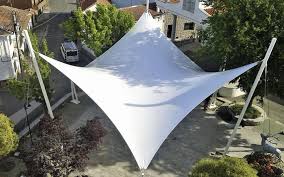 Hyperbolic Paraboloid Tensile Structure
Hyperbolic Paraboloid Tensile Structure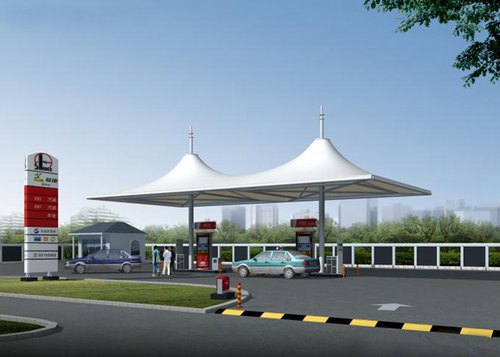 Petrol Pump Tensile Canopy
Petrol Pump Tensile Canopy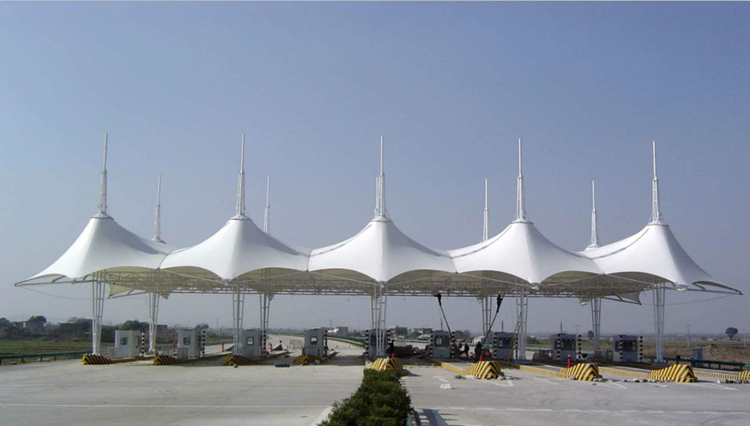 Toll Plaza Tensile Canopy
Toll Plaza Tensile Canopy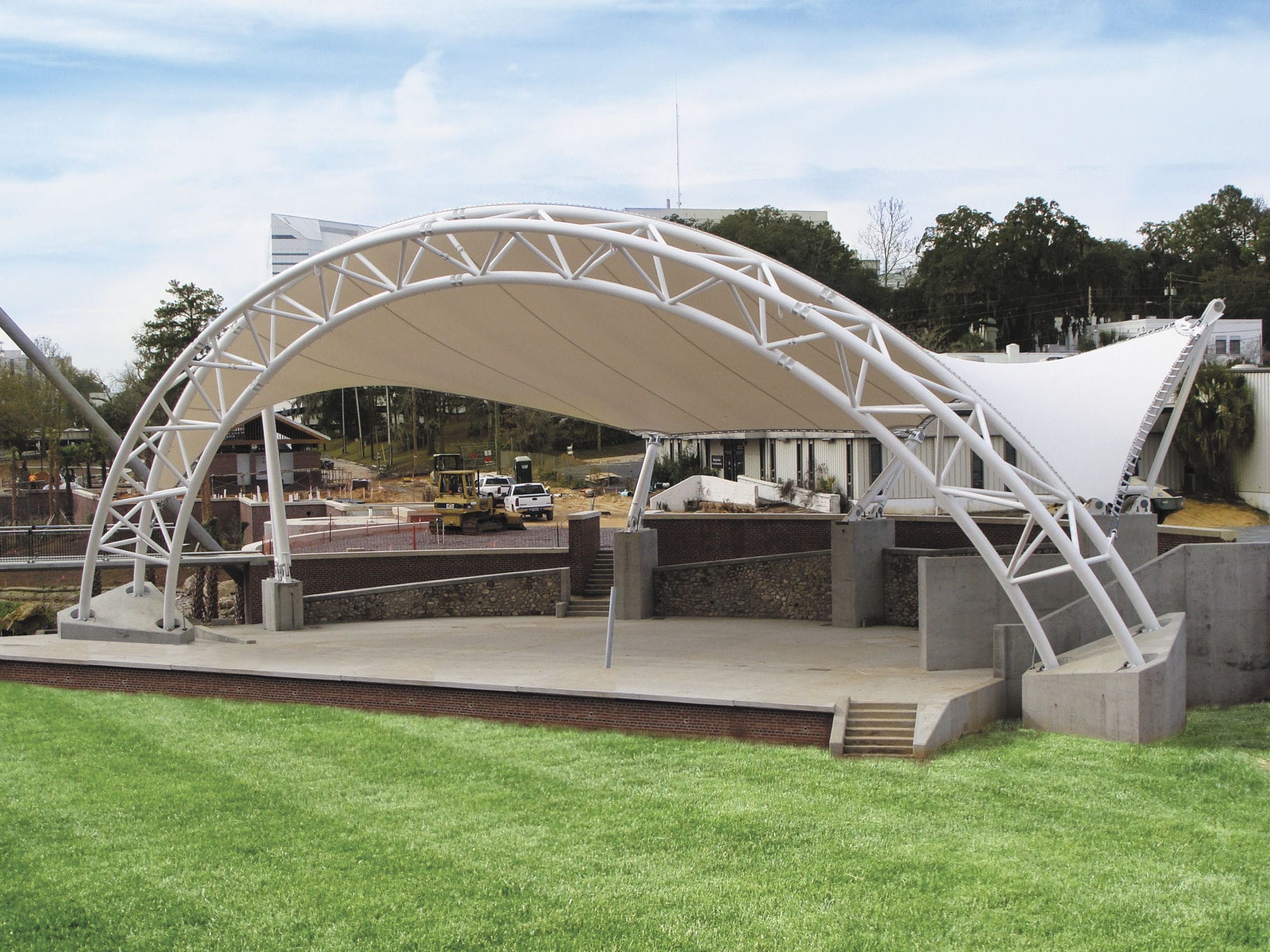 Arch Supported Tensile Structure
Arch Supported Tensile Structure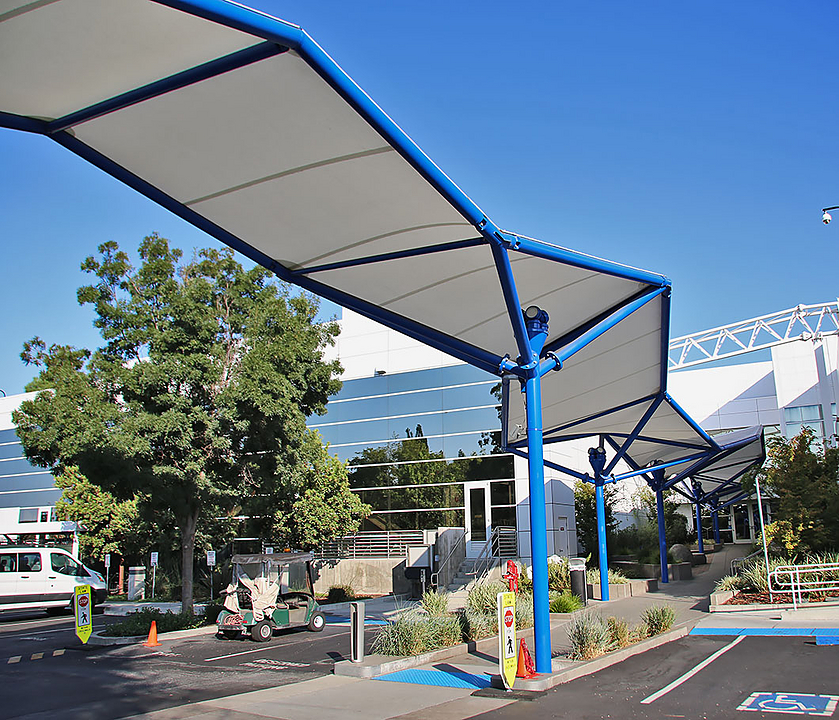 Barrel Roof Walkways
Barrel Roof Walkways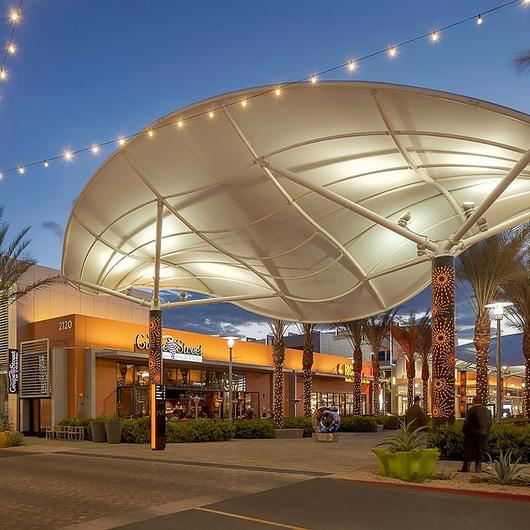 Canopy Membrane
Canopy Membrane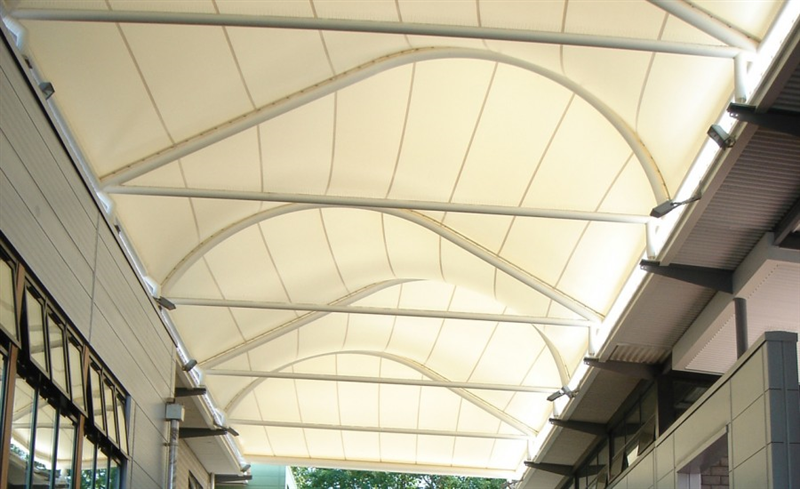 Atrium Tensile Architecture
Atrium Tensile Architecture School Tensile Structure
School Tensile Structure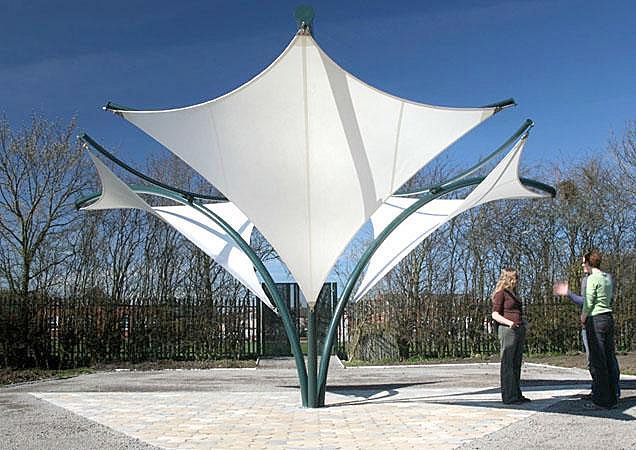 Tensile Landscape Structure
Tensile Landscape Structure Shell Structure
Shell Structure Tensile Pavilion Architecture
Tensile Pavilion Architecture Interior Tensile
Interior Tensile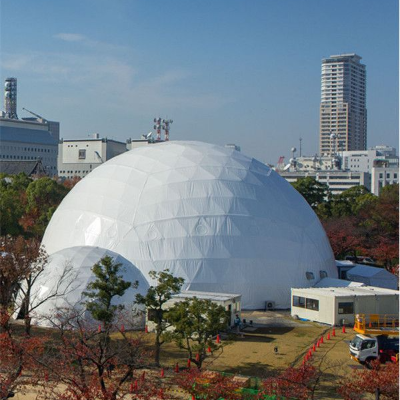 Tensile Dome
Tensile Dome Indoor Tensile Structure
Indoor Tensile Structure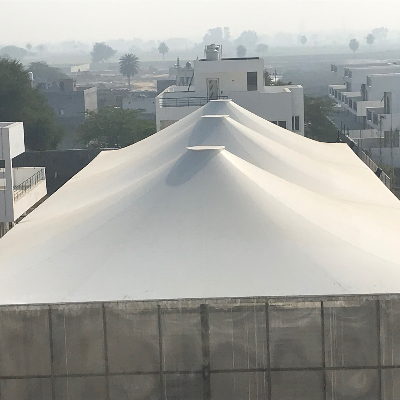 Tennis Court Tensile Roof Fabric Structure
Tennis Court Tensile Roof Fabric Structure Tensile Fabric False Ceiling and Stretch Ceiling
Tensile Fabric False Ceiling and Stretch Ceiling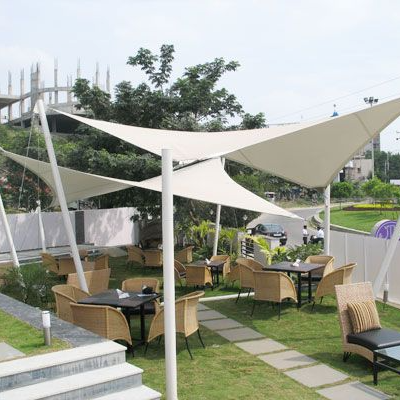 Tensile Structure Food Court
Tensile Structure Food Court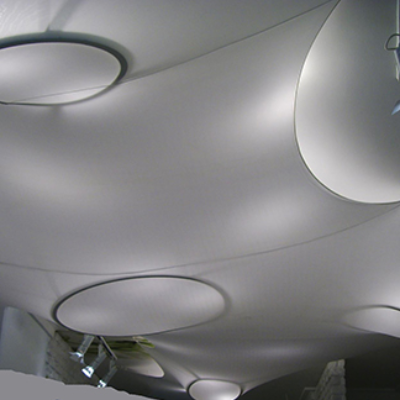 Tensile Stretch Ceiling
Tensile Stretch Ceiling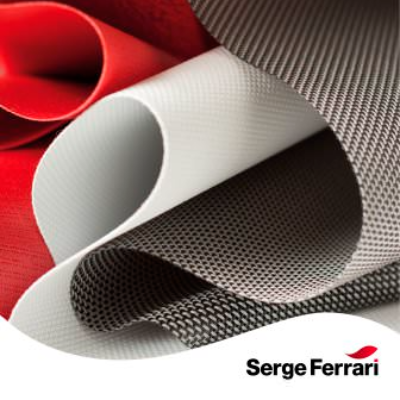 Serge Ferrari Fabric
Serge Ferrari Fabric Mehler Tensile Fabric
Mehler Tensile Fabric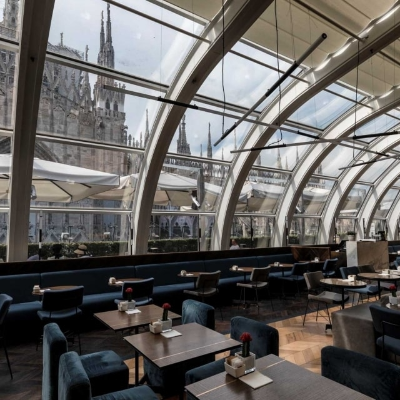 Acoustic Blinds
Acoustic Blinds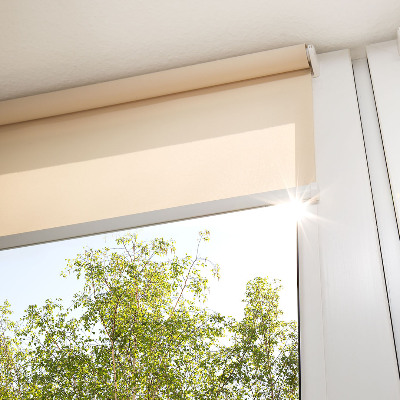 Roller Blinds
Roller Blinds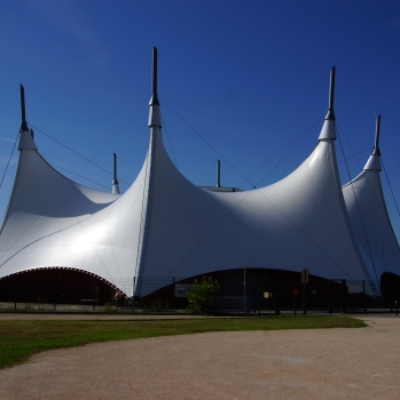 Mast Supported Tensile Structure
Mast Supported Tensile Structure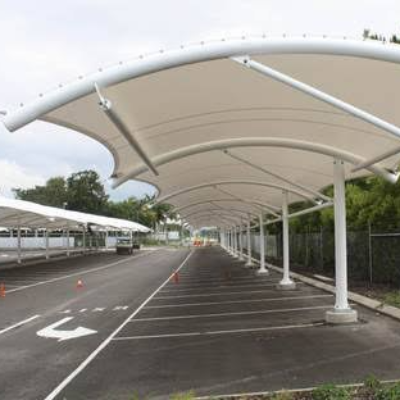 Barrel Vault Tensile Structure
Barrel Vault Tensile Structure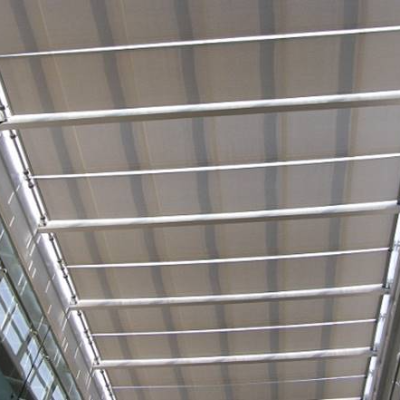 Parallel Tensile Structure
Parallel Tensile Structure